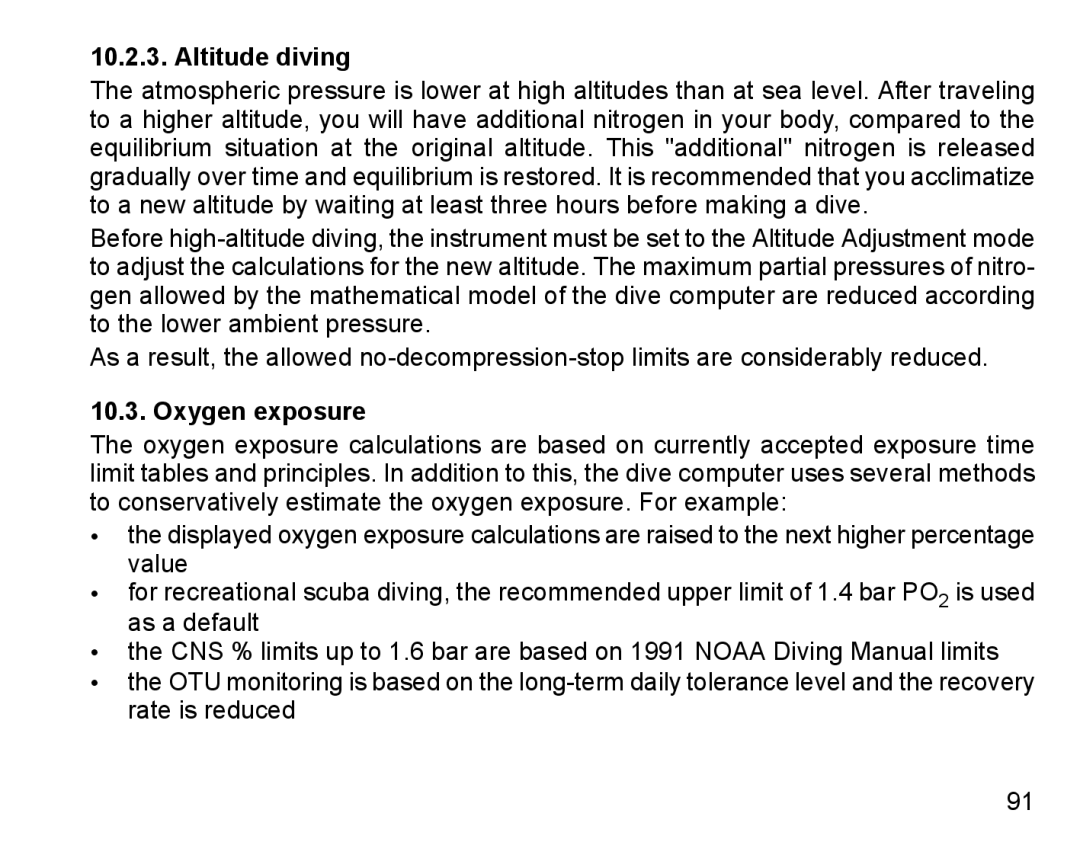10.2.3. Altitude diving
The atmospheric pressure is lower at high altitudes than at sea level. After traveling to a higher altitude, you will have additional nitrogen in your body, compared to the equilibrium situation at the original altitude. This "additional" nitrogen is released gradually over time and equilibrium is restored. It is recommended that you acclimatize to a new altitude by waiting at least three hours before making a dive.
Before
As a result, the allowed
10.3. Oxygen exposure
The oxygen exposure calculations are based on currently accepted exposure time limit tables and principles. In addition to this, the dive computer uses several methods to conservatively estimate the oxygen exposure. For example:
•the displayed oxygen exposure calculations are raised to the next higher percentage value
•for recreational scuba diving, the recommended upper limit of 1.4 bar PO2 is used as a default
•the CNS % limits up to 1.6 bar are based on 1991 NOAA Diving Manual limits
•the OTU monitoring is based on the
91
